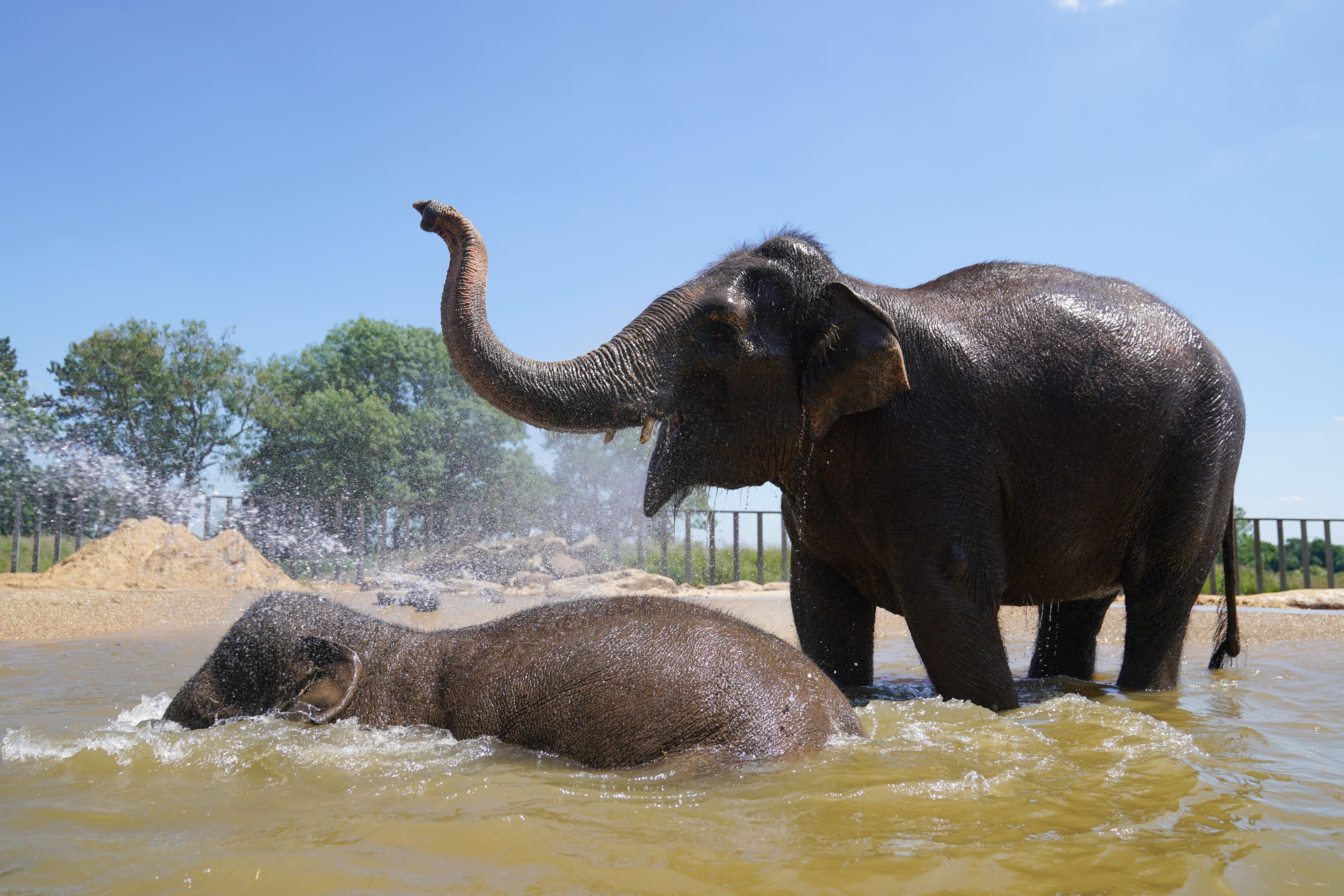Whiskers on an elephant’s trunk may help it feel and balance objects – study
Scientists say their research is the first detailed study of elephant whisker anatomy.

Your support helps us to tell the story
From reproductive rights to climate change to Big Tech, The Independent is on the ground when the story is developing. Whether it's investigating the financials of Elon Musk's pro-Trump PAC or producing our latest documentary, 'The A Word', which shines a light on the American women fighting for reproductive rights, we know how important it is to parse out the facts from the messaging.
At such a critical moment in US history, we need reporters on the ground. Your donation allows us to keep sending journalists to speak to both sides of the story.
The Independent is trusted by Americans across the entire political spectrum. And unlike many other quality news outlets, we choose not to lock Americans out of our reporting and analysis with paywalls. We believe quality journalism should be available to everyone, paid for by those who can afford it.
Your support makes all the difference.The thick, immobile whiskers on an elephant’s trunk may help it to feel and balance objects even though they cannot twitch in the way that many other mammals’ whiskers do, a study suggests.
Although elephant whiskers were first described in 1890, scientists say their research is the first detailed study of elephant whisker anatomy.
While the animals are more commonly associated with a thick hide, the tips of their trunks are covered in thick, sturdy whiskers.
The study found that elephant whiskers are cylindrical, and their follicles lack specialised features – known as ring sinuses and ring wulsts – that are thought to help the brain detect delicate whisker movements.
Trunk whiskers of elephants differ markedly from the facial whiskers of other mammals
For comparison, rat whiskers are tapered and conical in shape.
Writing in Communications Biology, the authors said they were “surprised that the marked difference in whisker number between African and Asian elephants has found so little attention so far”.
They added: “Trunk whiskers of elephants differ markedly from the facial whiskers of other mammals.
“In many small mammals, whiskers are thin, tapered, mobile, symmetrically arranged around the snout and function in peri-snout sensing.
“In contrast elephant trunk whiskers are thick, non-tapered, immobile, lateralised and are arranged in specific high-density arrays on the ventral trunk and the trunk tip.
“We suggest unique trunk whisker characteristics evolved to provide a haptically controlled action space for the extraordinary manipulative capacities of the elephant trunk.”
Michael Brecht, from the Humboldt University of Berlin, Germany, and colleagues examined the trunks and whiskers of six African and eight Asian zoo elephants.
They had either died of natural causes or had been euthanised by a vet due to serious health complications.
The samples came from 11 adults, a juvenile and two newborn calves.
The researchers found that the newborn African elephant they studied had 1,220 whiskers on its trunk while the newborn Asian elephant had 986.
In both species, the whiskers were arranged asymmetrically around the trunk, and are particularly dense on the trunk tip.
African elephants have thicker whiskers than Asian elephants and African elephants have approximately 1.7 times more whiskers than Asian elephants on their trunk tips.
According to the study, whisker length varies considerably and whiskers tend to be shorter on parts of the adult trunk the elephants prefer to use, such as the underside of the trunk tip.
The researchers suggest this is likely to be due to these whiskers being worn down over time.
They also looked at footage of a female Asian elephant retrieving fruit from a box, and found that her whiskers were immobile when the trunk grasped or suctioned fruit.
This indicates that while elephant whiskers may help them to feel objects, any contact between whiskers and objects is likely to be determined by the movements of the trunk, rather than from independent whisker movements.
According to the findings, this is in contrast to the facial whiskers of rodents and other mammals, which help animals explore their environments and detect objects by moving in fast and sweeping circular twitching or “whisking” motions.
But the scientists say elephants may still use their whiskers to explore the surfaces of larger objects such as food, and balance objects on their trunks.